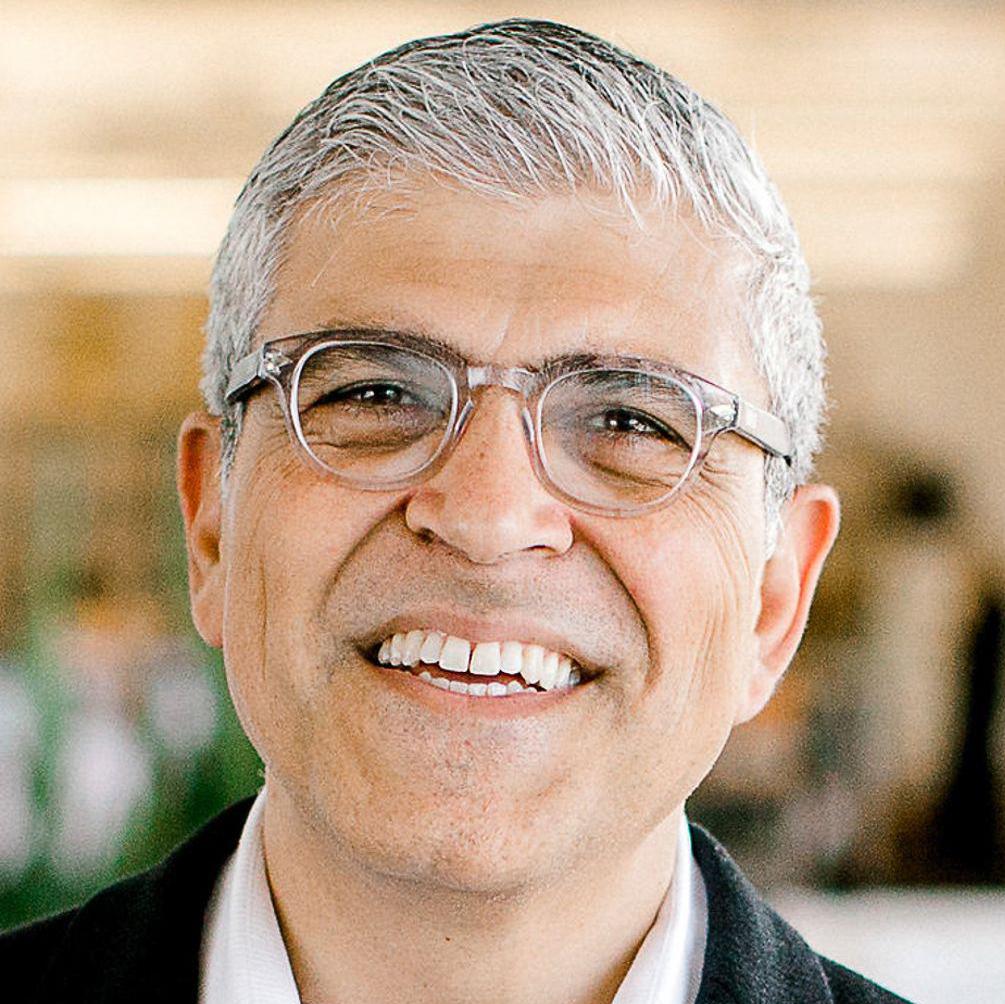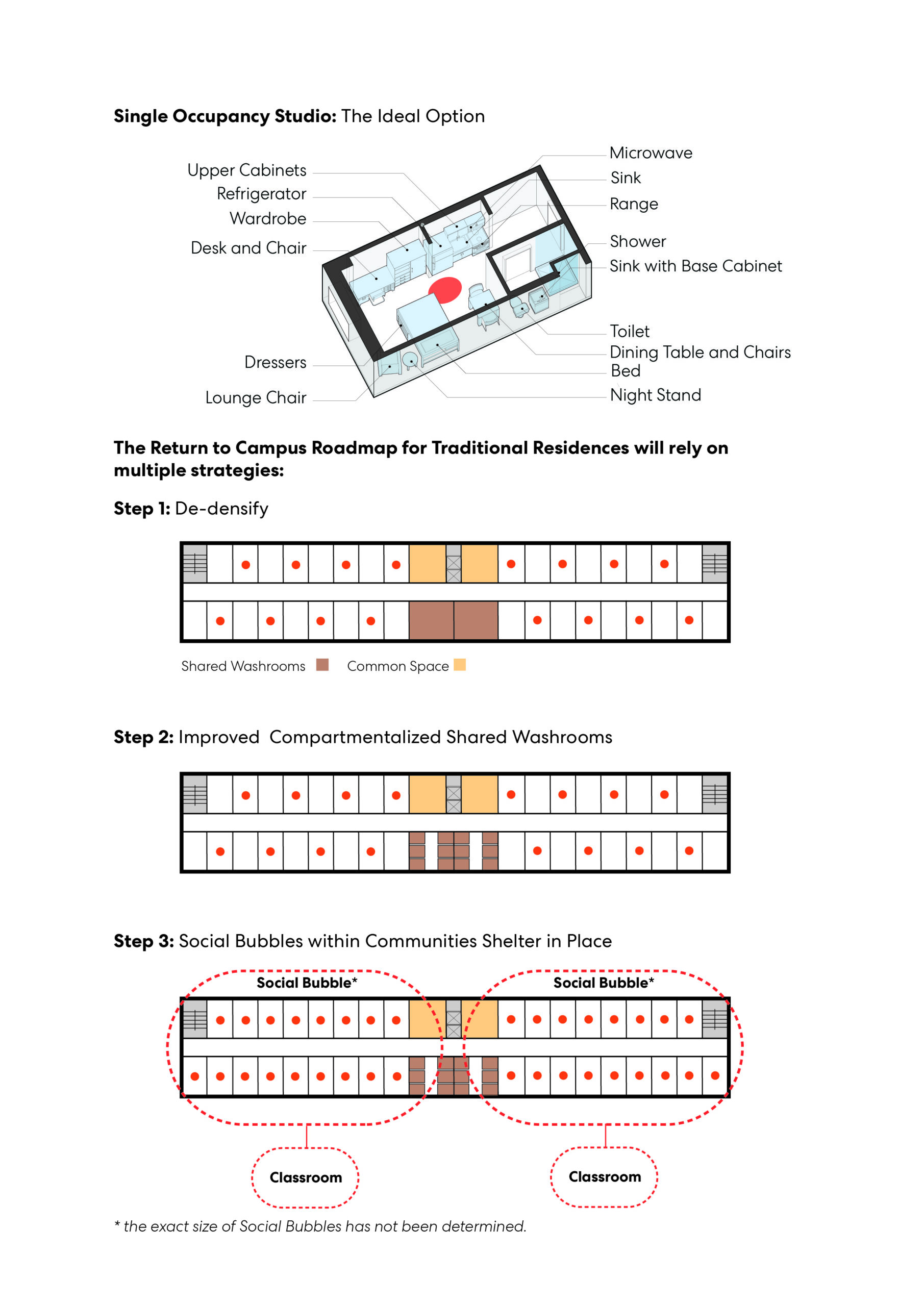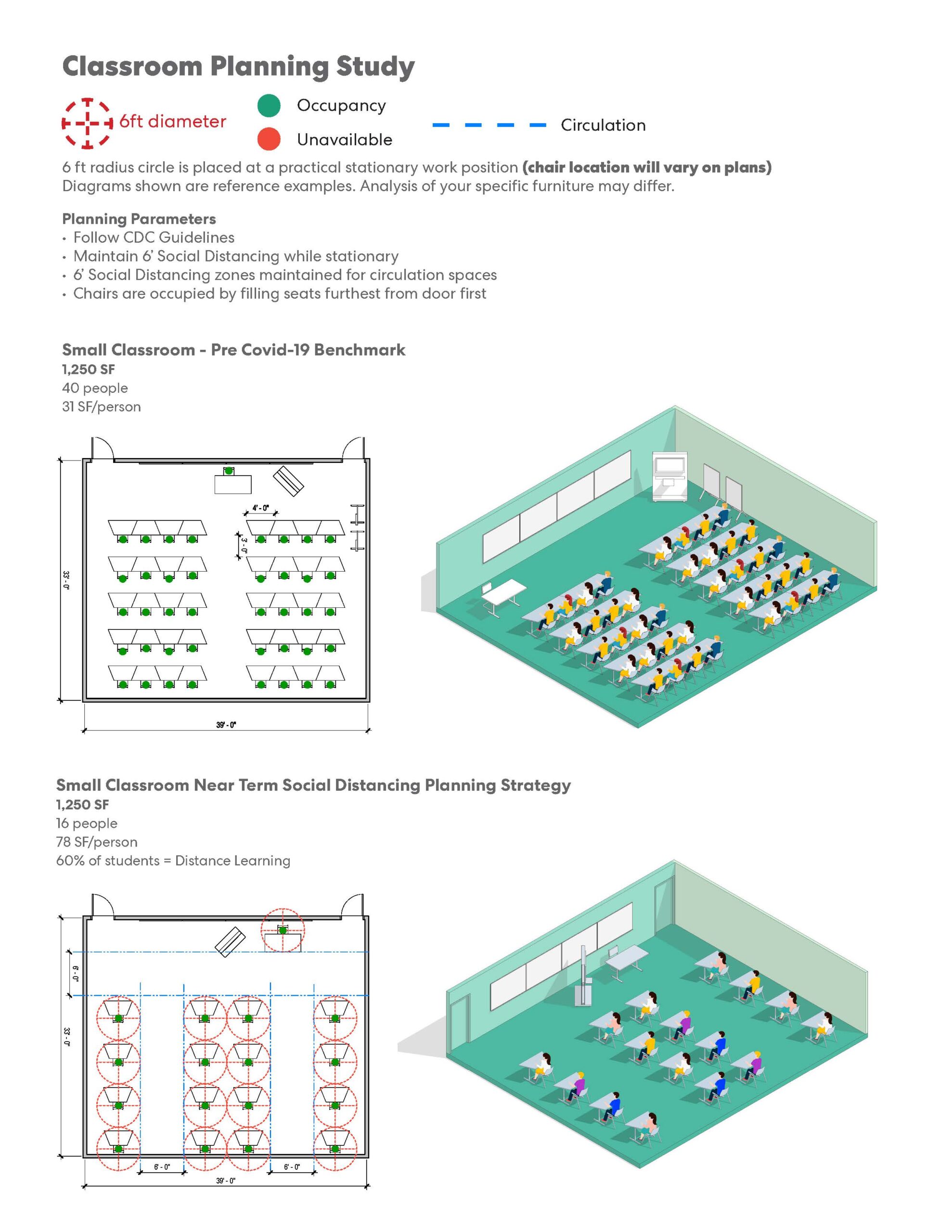
Reimagining the design of physical and virtual campus spaces is a key strategy for reopening colleges and universities—and keeping them open—during the first full semester of the COVID era.
There is a wide range of safety strategies leaders can deploy this summer to give their campuses a better chance of remaining open through Thanksgiving, when most schools plan to send students home, says Safdar Abidi, higher education principal with the international architecture firm, Perkins and Will.
“Higher education is not going away, regardless of any pandemic,” Abidi says. “Ask 18- to 24-year-olds today about the lockdown, and they talk about the significance of having a sense of place and a destination where they can come together and learn, which is the brick-and-mortar experience.”
Here are some of the key components of the company’s Return to Campus Roadmap:
1. Create family-style COVID ‘bubbles’
Similar to how families have self-isolated during the coronavirus pandemic, small groups of students can relax safety precautions if they are arranged into ‘bubbles’ that will live and learn together throughout the semester.
For instance, a reduced-density residence hall might have eight students occupying 20 rooms on one floor.
More from UB: How universities and colleges are handling move-in days
Housing officials could then assign specific bathroom stalls and showers to pairs of students who would “own” those fixtures. They would be responsible for cleaning their areas, thus reducing each other’s risk of exposure, Abidi says.

These students’ movements around campus could be further controlled if they were arranged by their majors, such as by grouping together nursing students.
An R.A. could also be assigned to each group to provide information from the university as well as emotional support.
Small schools could consider making their entire campus a bubble by having everyone pledge not to leave and by restricting visitors.
2. Establish waiting rooms and provide good directions
Beyond restricting the number of students in classrooms, controlling traffic in academic buildings will be another key tactic to prevent the transmission of COVID, Abidi says.
If a classroom has two doors, one should be designated as the entrance and the other, as the exit, to prevent students from passing each other.
Administrators should also consider using other rooms to allow students to gather and maintain safe physical distance while they’re waiting for the previous class to end and theirs to begin.
This could require moving furniture out of the “waiting room” to create more space.
Administrators will also have to install plenty of signage to remind staff and students of these new procedures, Abidi says.
To better understand traffic patterns on campus, some college and university leaders are using “mass motion software,” a technology platform used more commonly to determine how people move through facilities such as airports.
More from UB: UC San Diego plans to snuff an outbreak before it starts
College leaders, for instance, could use the software to track how students might move through a student union’s bookstore, dining areas and meeting rooms, and then develop safer patterns.
“You don’t want to create a situation where people gather without intention and create risk,” Abidi says. “One of the toughest challenges will be predicting students’ behavior once they’re back on campus.”
3. Maintain access and equity
Administrators will also have to ensure students who use wheelchairs or who have other disabilities can safely access de-densified classrooms.
 Most lecture halls dedicate that space in the top tier or the bottom tier, and campus officials will have to prioritize maintaining these spaces and ensuring students have safe ways to enter and exit, Abidi says.
Most lecture halls dedicate that space in the top tier or the bottom tier, and campus officials will have to prioritize maintaining these spaces and ensuring students have safe ways to enter and exit, Abidi says.
Signage must also give these students priority use of elevators in residence halls or other facilities while encouraging students without disabilities to use stairways.
Capacity in elevators could be reduced to as few as two people at a time, Abidi says.
4. Continue to build community
With many colleges and universities planning to resume most instruction online, educators should facilitate the creation of campus communities in the virtual world, Abidi says.
“Students are not craving to get back on campus because of classrooms,” Abidi says. “It’s because of the community of people in the same age bracket and who have the same values.”
Over the summer, students have created groups on Facebook and other social networks, and in some cases, gotten to know their future roommates virtually.
“The power of virtual communities has to become a part of the continuum community0-building on campus,” Abidi says. “It is not limited to time and geography and can be a precursor to the physical community on campus.”
UB’s coronavirus page offers complete coverage of the impacts on higher ed.






